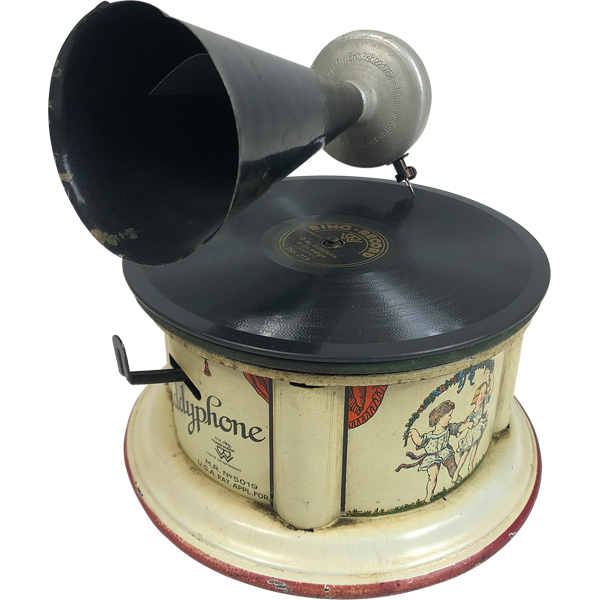
- DE
- EN
- FR


Everything was different in the past? Who would have thought that there was already multimedia in the children's room at the turn of the century?
Let's start with good sound - to be seen in the showcases on the left.
In 1887, Emil Berliner invented the gramophone, which was soon to be found in every good parlour of the middle classes. With the Bing children's gramophone, this technical achievement also took children's rooms by storm. They were sold under the names of Jugend-Sprechmaschinen, Kiddyphone or Bingola and played real shellac records.
You could listen to hits, children's songs, Christmas carols, orchestral pieces, dances and marches. In 1927, Bing had over 100 titles in its programme. The sheet metal cases were all finely lacquered with pretty decorations. The small gramophones were mechanically driven by clockwork.
Almost all the kiddyphones you see here still work. In the video you can see and hear what delighted children back then - even if it might not meet today's hi-fi standards.
In the showcases on the right-hand side, we turn our attention to moving pictures. Because when pictures learned to walk, magic lanterns were the latest fascination for adults and children. They transported the latest technical and physical developments directly into the middle-class home.
The magic lanterns were the forerunner of slide and film projectors. They were available for both colour and black-and-white images. The transition between toys, home and cinema projectors was fluid at Bing.